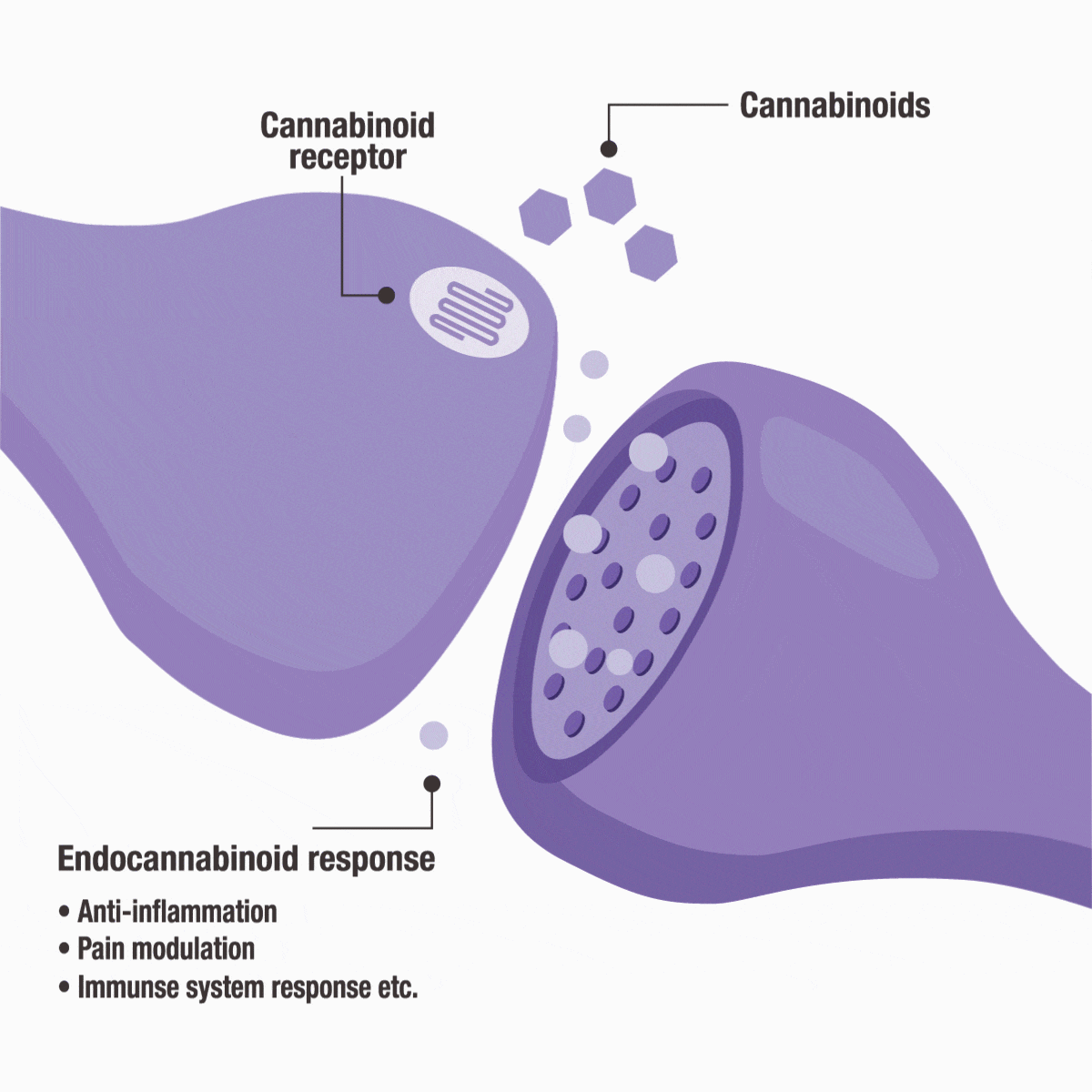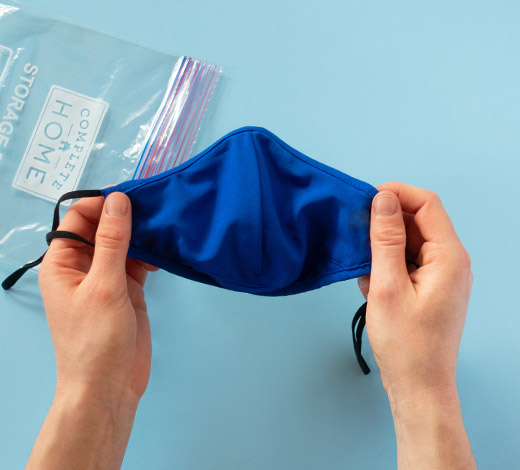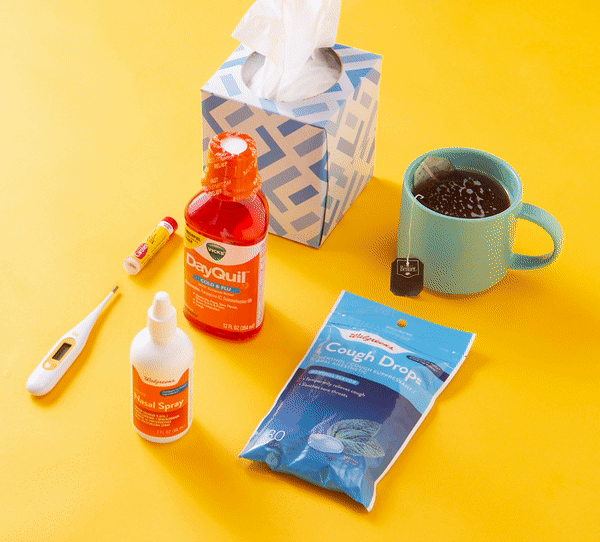What is CBD?
- CBD is one of the largest active components in the cannabis plant (aka marijuana). There are over 80 cannabinoids that make up cannabis, and CBD makes up 40% of the plant.1
- Another main component of the cannabis plant is THC (tetrahydrocannabinol). THC produces the psychoactive “high” associated with marijuana use, while CBD does not. CBD and THC have different chemical compounds, and they affect your body differently.2
How does CBD affect the body?
- We are still learning exactly how cannabidiol interacts with the endocannabinoid system. CBD interacts with two main receptors: CB1 and CB2. Cannabinoids can bind to either receptor and act like a key to a lock, signaling the body to create either a greater autoimmune response or anti-inflammatory response, respectively. 4, 5
- All vertebrates have an endocannabinoid system, which may affect a variety of biological processes, including pain, mood, memory, appetite, stress, sleep and more. The endocannabinoid system works to help keep the body in balance in response to changes we experience in our environment. 3

What are we still learning about CBD?
The short answer is: a lot!
- CBD is the ingredient in many over-the-counter products, but it is not currently approved by the FDA, like many vitamins and supplements. There’s only one FDA-approved prescription cannabidiol drug on the market so far—Epidiolex ®, which is used to treat two severe epilepsy disorders.6, 7
- CBD is being studied for it’s role in pain, anxiety and inflammation, among other conditions, as well as skin care.
- CBD is available over the counter in various forms including creams, lotions, and other topical agent for treatment of arthritis8 and other painful conditions. Other forms may also include oral supplements like hemp derived CBD oil, administered under the tongue, capsules or oral spray, or as a topical. You may also encounter CBD as an ingredient in inhaled (smoked or vaped) formats, but you should always consider the potential health drawbacks to inhalants before consuming any product in that way.11
- You might encounter CBD as a single ingredient or listed among other ingredients, so it’s important to read labels and consider all ingredients in CBD products.
Much more research is needed to fully understand CBD’s effectiveness on pain, anxiety, insomnia and other conditions. In fact, there are currently more than 150 clinical studies underway to study the effects of CBD on the body.13
What you should know before using CBD
- The passage of the 2018 U.S. Farm Bill legalized the production of hemp, a variety of cannabis that only contains less than 0.3% THC. Much of the CBD products on the market are derived from hemp, but since cannabis is still illegal under Federal law, there is a legal grey zone about CBD products.14, 15
- While you may see gummies or other edibles that contain CBD for sale, the FDA states is currently illegal to market CBD by adding it to a food or labeling it as a dietary supplement.
- While there are many CBD products marketed for pain relief and other uses, these claims are not regulated by the FDA (they are not required to be). Like herbal supplements and other non-regulated substances, the FDA has not approved claims on CBD’s effectiveness.16
- If you have questions on CBD’s interactions with your existing medications or health conditions, speak to your doctor or pharmacist first before taking it.
- Use caution in using CBD products of any type, and start with using low doses of cannabidiol to assess how it affects you.
SOURCES:
1. https://pubchem.ncbi.nlm.nih.gov/compound/Cannabidiol
2. https://www.health.harvard.edu/blog/cannabidiol-cbd-what-we-know-and-what-we-dont-2018082414476
3. https://www.uclahealth.org/cannabis/human-endocannabinoid-system
4. https://pubmed.ncbi.nlm.nih.gov/17828291/
5. https://www.healthline.com/health/endocannabinoid-system#how-it-works
6. https://www.drugs.com/epidiolex.html
7. https://pubmed.ncbi.nlm.nih.gov/26341731/
8. https://medicine.umich.edu/dept/cpfrc/news/archive/201910/npr-interview-dr-dan-clauw
10. https://www.nature.com/articles/nri1602
11. https://www.consumerreports.org/cbd/is-it-safe-to-vape-cbd/
12. https://www.cedars-sinai.org/blog/cbd-beauty-products.html
13. https://www.webmd.com/pain-management/cbd-thc-difference#1-2
14. https://healthblog.uofmhealth.org/health-management/should-you-take-cbd-for-pain
15. https://www.brookings.edu/blog/fixgov/2018/12/14/the-farm-bill-hemp-and-cbd-explainer/


